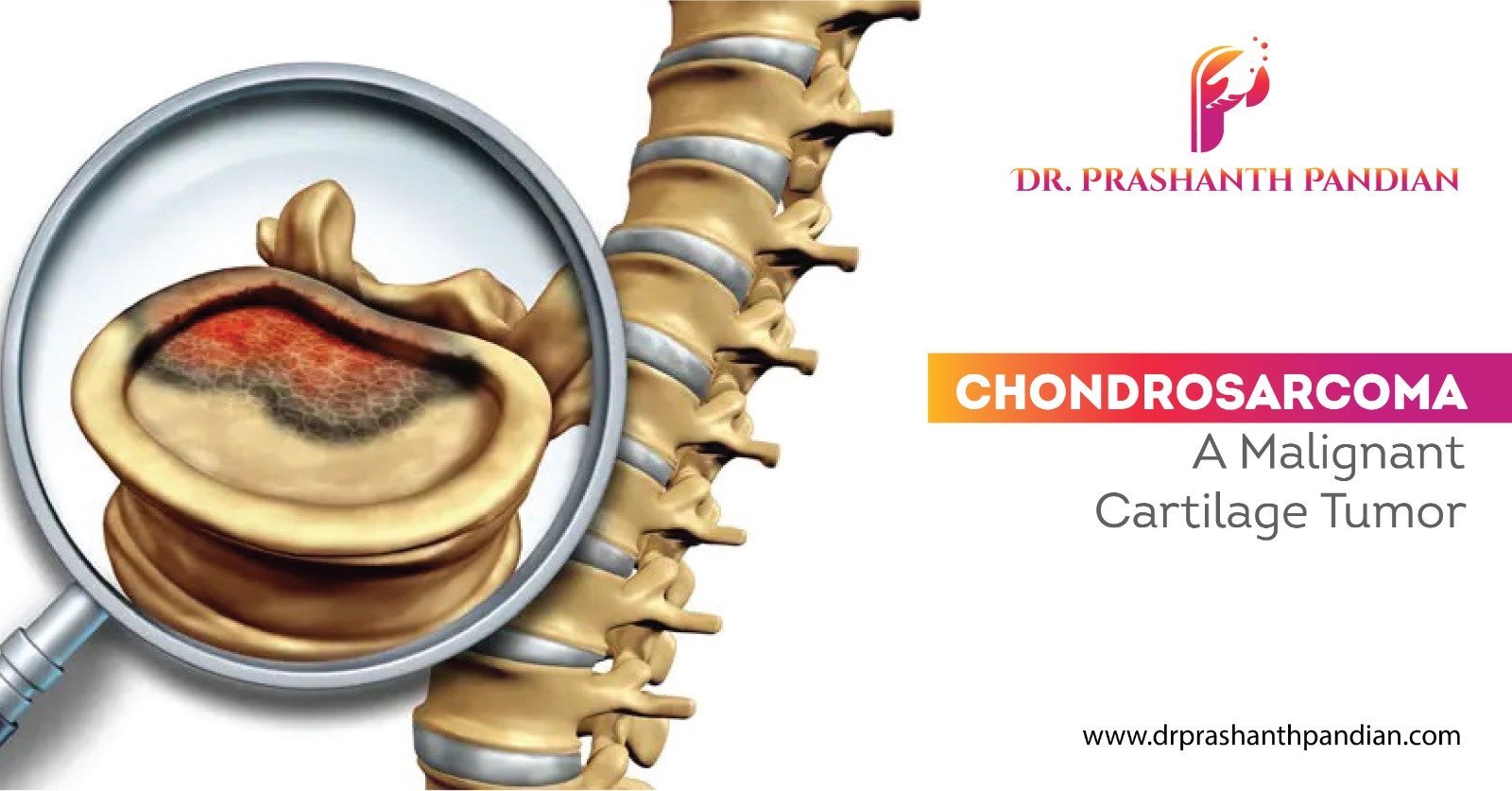Chondrosarcoma is a rare but aggressive malignant tumour that originates in cartilage tissue. It most commonly affects the pelvis, femur, humerus, and ribs. Known for its potential to grow rapidly and invade nearby tissues, this cancer often spreads (metastasizes), particularly to the lungs, making early diagnosis and treatment crucial for improving patient outcomes.
Causes and Risk Factors
While chondrosarcoma usually occurs spontaneously, it may also develop from pre-existing benign cartilage tumours such as osteochondromas or enchondromas. Though the exact cause is unknown, several risk factors have been identified:
- Male sex
- Age over 40
- Previous cancer treatments, such as chemotherapy or radiation
In rare cases, genetic syndromes like Ollier disease or Maffucci syndrome may predispose individuals to develop chondrosarcoma.
Symptoms and Clinical Presentation
The hallmark symptom of chondrosarcoma is a deep, persistent pain that typically worsens at night. As the tumour grows, it may press on nearby nerves and joints, causing:
- Neurological symptoms, especially in the pelvis (affecting sciatic or femoral nerves)
- Limited range of motion and joint dysfunction when near joints
- Pathological fractures, especially in weight-bearing bones
- Swelling or a palpable mass in advanced cases
Some subtypes, like clear cell or mesenchymal chondrosarcoma, may grow slowly and remain undetected for over a year.
Diagnosis and Prognosis
Diagnosis is usually confirmed through imaging (MRI, CT) and biopsy. The prognosis depends on:
- Tumour location – tumours in the head and neck fare better than those in the pelvis
- Tumour grade – high-grade tumours behave more aggressively
- Stage at diagnosis – early-stage tumours have better outcomes
- Surgical resectability – complete surgical removal improves prognosis significantly
In children and adolescents, the disease is generally less aggressive, offering a more favourable outlook than in older adults.
Treatment and Management
The mainstay of treatment is wide surgical resection, aiming to completely remove the tumour. Unlike many cancers, chondrosarcoma responds poorly to chemotherapy and radiation, making surgery essential. Long-term follow-up is critical to monitor for recurrence or metastasis.
Chondrosarcoma is a serious condition requiring prompt recognition and intervention. Early detection, accurate grading, and surgical management remain the most effective strategies in improving survival and quality of life.




